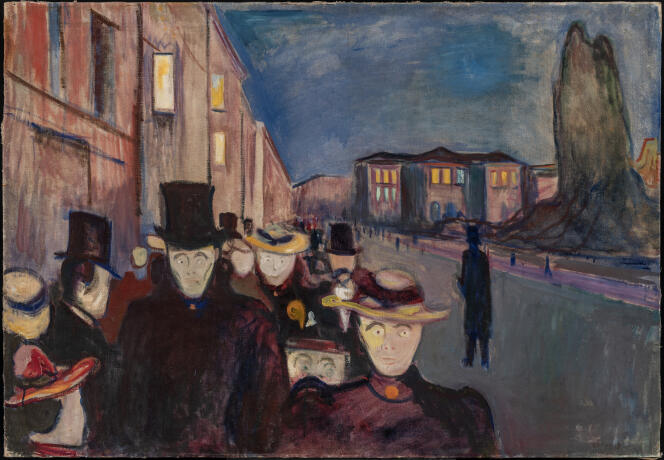
During his life, Edvard Munch (1863-1944) was famous in Scandinavia, in the Germanic countries and, to a lesser extent, in other European countries, until the First World War, after which his fame waned. Today he is universally known, but his work undergoes the sad simplification that reduces Van Gogh to the severed ear and Picasso to the Dame of Avignon (1907). In his case, it’s “The Scream” (1893-1917), reproduced and diverted to infinity. It appears in the retrospective held at the Musée d’Orsay in Paris, in the form of a lithograph that the artist drew of it in 1895, without the hanging apparently showing it. And for good reason: the aim of the exhibition is to present, in one hundred works on canvas and paper, a Munch as complete as possible, far from the usual banalities.
If there are many of his best known works, such as “Mélancolie” (1891-1896) or Evening on Karl-Johan Avenue (1892), others, much less expected, occupy at least an equal place, for example the panels of what is called the “Frize Linde”, named after the patron Max Linde who commissioned it in 1904 from the artist and who refused when he discovered why, according to him, it was not suitable for the place where it was to be placed, the bedroom of his children. Another demonstrative bias: to present different versions of the recurring motifs of him, the Vampire where is the Girls on a bridgeversions sometimes separated by several decades, and thus show how much, even in the interwar period, Munch experimented with different ways, with stylistic inventions and comings and goings that baffled – euphemism – critics and lovers of his time.
In strict chronological order, the curator of the exhibition, Claire Bernardi, prefers vis-à-vis and neighborhoods
Sticking to a rigorous chronological order would therefore not make much sense and the curator of the exhibition, Claire Bernardi, gets rid of it, preferring vis-à-vis and neighborhoods that are many invitations to confrontation and wonder. This attention to the creative process and its rhythms is all the more emphasized as at times more states of the same subject are combined, treated by painting, drawing, lithography and wood engraving. From one to the other, the modifications can go as much towards a refinement of the shape as towards the addition of additional elements. There is no other rule than that of permanent experimentation, that until the last few years and a self-portrait of 1940-1943 where Munch is shown in front and in profile at the same time, working hatches and smears of harsh colors with Picassian brutality.
You still have 68.17% of this article to read. The following is for subscribers only.
–


